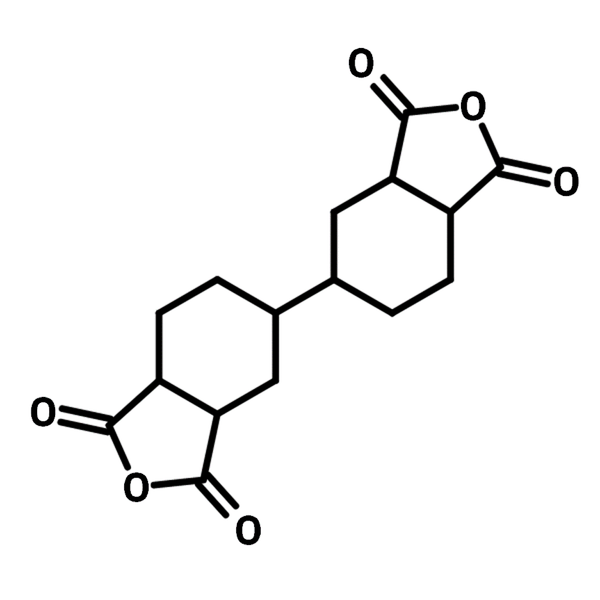Dicyclohexyl-3,4,3',4'-tetracarboxylic dianhydride (HBPDA)
CAS Number 122640-83-9
Chemistry Building Blocks, Diamines and Dianhydrides, Heterocyclic Building Blocks, Materials, MonomersAn non-conjugated alicyclic dianhydride
Applied for polyimides synthesis in application of high-performance polymer, photovoltaics, and optoelectronics
Specifications | MSDS | Literature and Reviews
Dicyclohexyl-3,4,3',4'-tetracarboxylic dianhydride (HBPDA), CAS number 122640-83-9, is a dianhydride building block with a flexible bicyclohexyl core. The polyimides synthesized form dicyclohexyl-3,4,3',4'-tetracarboxylic dianhydride are often transparent, because of the flexible polymer backbones. Thus, it can be used as shielding layers in photovoltaics. The refractive index of the polyimides can be tuned by TiO2 fillers for matching the ZnO layer (the electron transport layer), to reduce the reflection losses at the ZnO interface.
HBPDA based polyimides are solution-processable, owing to the bicyclohexyl moiety. The polyimides are biodegradable, exhibiting 90% weight-average molecular weight changed after 49 days of degradation by porcine pancreatic lipase.
General Information
| CAS Number | 122640-83-9 |
| Chemical Formula | C16H18O6 |
| Full Name | Dicyclohexyl-3,4,3',4'-tetracarboxylic dianhydride |
| Molecular Weight | 306.31 g/mol |
| Synonyms | Dodecahydro-[5,5'-biisobenzofuran]-1,1',3,3'-tetraone |
| Classification / Family | Dianhydride building block, Photovoltaics, Optoelectronics, High performance polymers |
Chemical Structure

Product Details
| Purity | >99% |
| Melting Point | Tm = 208 °C |
| Appearance | White to off-white powder/crystal |
MSDS Documentation
 Dicyclohexyl-3,4,3',4'-tetracarboxylic dianhydride (HBPDA) MSDS Sheet
Dicyclohexyl-3,4,3',4'-tetracarboxylic dianhydride (HBPDA) MSDS Sheet
Literature and Reviews
-
Assessment of optical and thermal properties of polyimide/metal oxide composites for photovoltaic uses, A. Barzic et al., Bull. Mater. Sci., 46, 18(2023); DOI: 10.1007/s12034-023-02889-4.
-
Development of solution-processable, optically transparent polyimides with ultra-low linear coefficients of thermal expansion, M. Hasegawa, Polymers, 9, 520(2017); DOI: 10.3390/polym9100520.
-
Polyimides containing aliphatic/alicyclic segments in the main chains, Y. Zhuang et al., Prog. Polym. Sci., 92, 35-88(2019); DOI: 10.1016/j.progpolymsci.2019.01.004.
